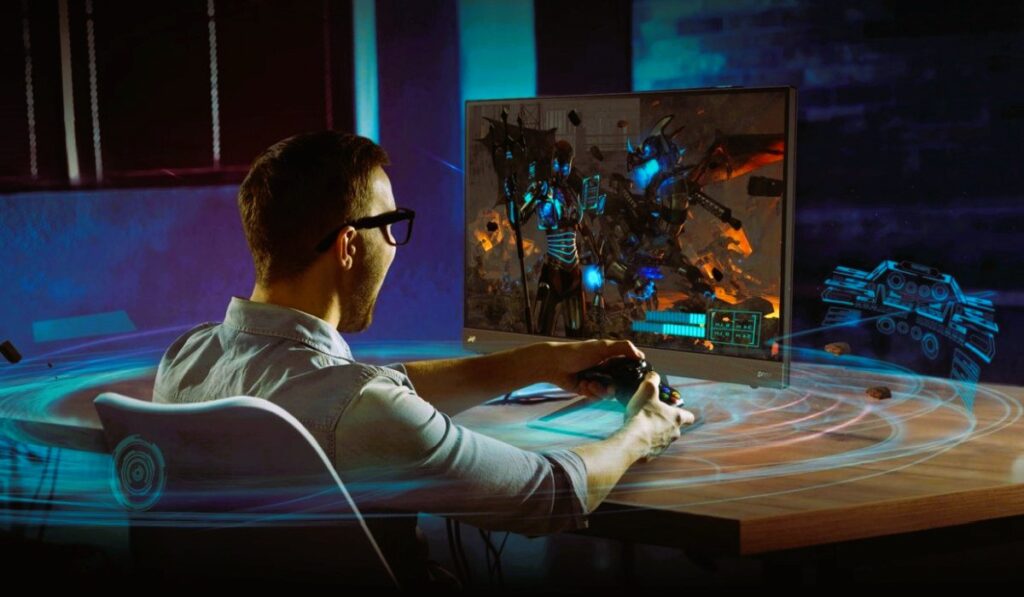In recent years, there has been a growing recognition of the importance of physical and mental exercises in gaming. While video games were once viewed as purely sedentary activities, researchers and game developers alike have begun to explore ways to incorporate physical and mental exercises into the gaming experience. In this article, we’ll explore how physical and mental exercises have become an integral part of the gaming experience, and examine the various ways in which they can enhance gameplay, promote health and well-being, and provide new opportunities for players.
1. Physical Exercises in Gaming
Traditionally, gaming has been associated with a sedentary lifestyle, characterized by long hours spent sitting in front of a screen. However, in recent years, there has been a growing movement towards incorporating physical exercises into gaming, both as a means of promoting health and well-being and as a way to enhance the gaming experience.
One of the most notable examples of physical exercises in gaming is the rise of motion-controlled gaming systems, such as the Nintendo Wii and the Microsoft Kinect. These systems use motion-sensing technology to track players’ movements and translate them into in-game actions, allowing players to engage in a wide range of physical activities, from dancing and sports to fitness workouts and yoga.
Moreover, many traditional video games have also incorporated elements of physical activity into their gameplay, such as rhythm-based games that require players to dance or move in time with the music, or fitness games that provide structured workout routines and exercise challenges.

For further reading on physical exercises in gaming, you can visit the following websites:
2. Mental Exercises in Gaming
In addition to physical exercises, gaming has also become a popular platform for engaging in mental exercises and cognitive challenges. Many video games require players to use critical thinking, problem-solving, and decision-making skills in order to progress through the game, solve puzzles, and overcome obstacles.
Moreover, there has been a growing interest in the development of “brain-training” games and apps that are specifically designed to improve cognitive functions such as memory, attention, and processing speed. These games often incorporate a variety of mental exercises and challenges, such as memory games, logic puzzles, and attention tasks, and are intended to provide users with a fun and engaging way to keep their minds sharp and active. Did you like the article? Read also about Virtual Reality Technologies.
Furthermore, gaming has also become a popular platform for educational games and simulations that are designed to teach players new skills and knowledge in a variety of subjects, from math and science to history and language arts. These games often incorporate elements of problem-based learning, inquiry-based learning, and experiential learning, and are intended to provide players with opportunities to explore and experiment in a safe and engaging environment.
3. Integration into Gameplay
One of the key challenges in incorporating physical and mental exercises into gaming is finding ways to seamlessly integrate them into gameplay without disrupting the flow or immersion of the experience. Game developers have experimented with a variety of approaches to achieve this, ranging from incorporating exercises directly into the game mechanics and objectives to providing optional workout modes and challenges for players who are interested in adding a physical or mental component to their gaming experience.
For example, some games may require players to perform physical movements or gestures in order to execute in-game actions, such as swinging a sword or casting a spell. Other games may include mini-games or challenges that test players’ cognitive abilities, such as solving puzzles or answering trivia questions.

Moreover, some games may provide players with customizable options and settings that allow them to tailor their gaming experience to their individual preferences and needs. For example, players may be able to adjust the difficulty level of physical or mental challenges, set personal fitness goals, or track their progress over time.
Conclusion
In conclusion, physical and mental exercises have become an integral part of the gaming experience, offering new opportunities for players to engage in healthy and stimulating activities while enjoying their favorite games. Whether it’s through motion-controlled gaming systems, brain-training apps, or educational simulations, gaming provides players with a wide range of opportunities to engage in physical and mental exercises that can enhance gameplay, promote health and well-being, and provide new challenges and experiences. By exploring the various ways in which physical and mental exercises have been incorporated into gaming, we gain a deeper understanding of the potential benefits and opportunities that gaming offers for promoting physical and mental health, learning, and personal development.
These resources provide valuable insights and information on the ways in which physical and mental exercises have become an integral part of the gaming experience, as well as expert analysis, reviews, and discussions on the latest trends and developments in exergaming, brain-training, and educational gaming. Whether you’re a casual player, a fitness enthusiast, or an educator, these websites offer a wealth of resources to explore and stay informed about the intersection of gaming and physical and mental health.
